A Master Educator, Mentor
and Scientist
Vincent DeLeo, MD, recipient of 2025 DF Lifetime Career Educator Honorary Award
July 2025
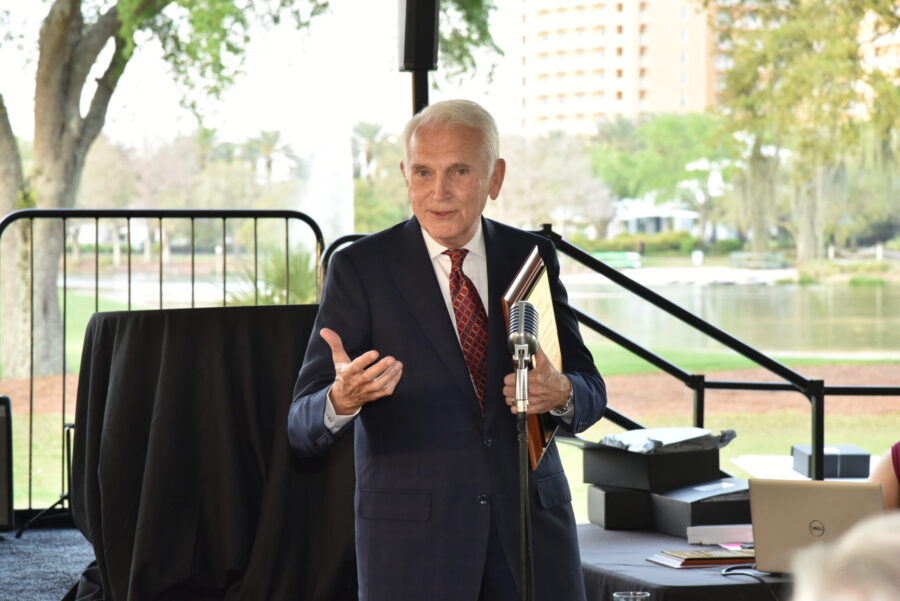
Dr. Vincent DeLeo, the 2025 recipient of the DF Lifetime Career Educator Honorary Award, has devoted his life to education, mentorship, and innovation. And he has awards, distinctions, honors, and the respect of many colleagues to prove it.
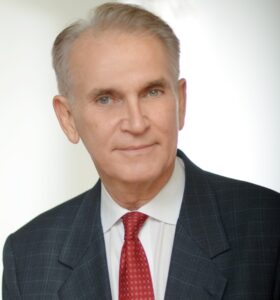
Dr. Vincent DeLeo received a DF Fellowship Award early in his career for his newly established lab at Columbia University.
DeLeo is a globally recognized expert in contact dermatitis, environmental dermatology, and photomedicine. He received his first formal honor in 1980, while he was an attending in the Department of Dermatology at the Charity Hospital of Louisiana in New Orleans: a Gold Medal in Educational Value from the AAD for his exhibit on Variegate Porphyria.
Several academic and hospital appointments led him to chair dermatology departments, develop and run residency programs, publish more than 300 articles, book chapters and books, notably the influential Contact and Occupational Dermatology, which he co-authored in 1993, act as editor-in-chief for Cutis, a peer-reviewed clinical journal, and assume leadership roles within prominent dermatology societies such as the American Contact Dermatitis Society, the New York Dermatology Society, and the Dermatologic Society of Greater New York.
DeLeo served a four-year term on the board of the American Academy of Dermatology, an experience he described as educational. “I got to interact with people I never would have met in my clinical or basic science work,” he said. His involvement with the North American Contact Dermatitis Group laid the foundation for his leadership role in the American Contact Dermatitis Society (ACDS). DeLeo became its first Secretary-Treasurer and eventually its president, a role in which he continued to foster educational opportunities and professional growth.
DeLeo described his roles within societies as opportunities “to create things, to look at the bigger picture and ask,’ What can I do to make this better?’, because that’s what keeps it exciting.”
DF Lifetime Career Educator Award: What it Takes
The Lifetime Career Educator Award honors a full-time academician who has dedicated their career to educating dermatology residents and fellows. They have a lifelong history of dedicated service as a mentor and role model for trainees in the department. The candidate should be known for their ability to enthusiastically impart knowledge, as well as inspire the student of dermatology to pursue a greater understanding of the specialty.
Superlatives describing his accomplishments seem inadequate. His influence on dermatology and the hundreds of dermatology residents he has mentored is immeasurable. And uncontested by anyone who knows him, has worked with him, or has been mentored by him.
Former mentee Dr. Andrew Alexis, MD, MPH, a professor of clinical dermatology at Weill Cornell Medicine’s Department of Dermatology, likened his experience as a medical student and resident to “observing a master of his craft — an exceptional diagnostician with a vast body of knowledge and a charming bedside manner that would put every patient at ease.
“Vince generously shared his knowledge of contact dermatitis and photodermatology through countless outstanding lectures and numerous publications, which collectively have helped educate generations of dermatologists and have left an indelible mark on the field.”
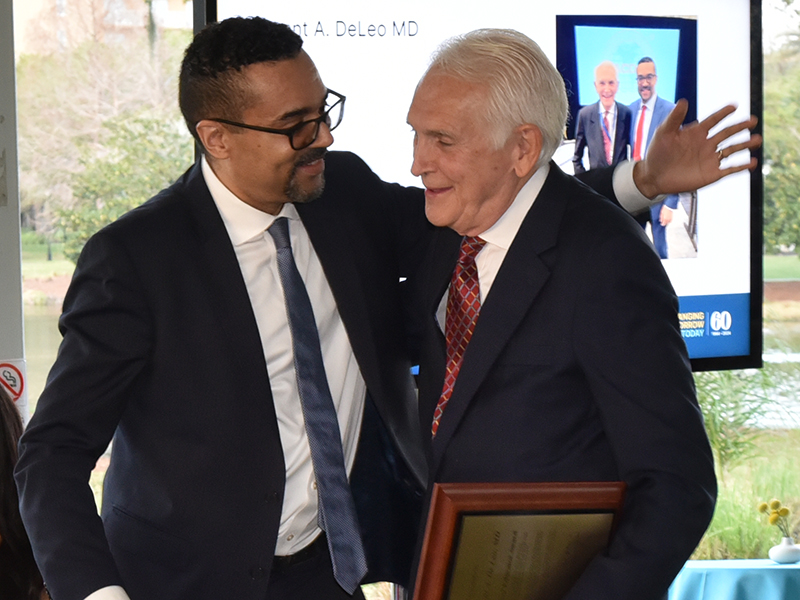
Dr. Andrew Alexis, MD, MPH, professor of clinical dermatology at Weill Cornell Medicine’s Department of Dermatology and former mentee presents Dr. DeLeo with the 2025 DF Lifetime Educator of the Year Honorary Award.
Yet when DeLeo reflects on his four-decade career in dermatology, it’s not the accolades or status that have meant the most. As he puts it, “the best part of all of it always was teaching and mentoring. That was the thing that gave me the most joy.”
That, and, initially, delivering babies.
While an intern at USPHS Hospital in his hometown of New Orleans, Louisiana, DeLeo was introduced to obstetrics and gynecology during a rotation and then did a two-year OB-GYN residency. Before long he realized that “delivering babies was fun, but everything else you do as an OB-GYN, like surgery, didn’t really suit me,” he said.
So when an opening came up in New York for a three-year photobiology residency in a joint program between Columbia Presbyterian Hospital and the USPHS Hospital, he applied and was accepted to the program.
This was the first of many opportunities DeLeo would seize and act upon.
A two-year fellowship in dermatology at Columbia Presbyterian followed, and within six months, he discovered his true passion: photobiology, which, it turned out, did suit him.
“That’s when it all started,” said DeLeo. And it’s why receiving this award feels especially meaningful to him; it recognizes the work he found most rewarding, and earns him a place alongside other recipients of the DF Lifetime Career Educator Award, among them Drs. William James, Timothy Berger, and Victoria Werth.
A defining moment
In 1975, DeLeo was a resident at Columbia, when he met the patient “he would never forget”: a four-year-old boy with an undiagnosed skin condition that was unbearably painful every time he stepped outdoors. Dr. Leonard Harber who was Chair of the Department of Dermatology at the time and a leader in photobiology and photomedicine, took one look at the child and immediately identified his condition as Erythropoietic Protoporphyria.
“To be able to know, from the history and looking at this kid who had been to I don’t know how many doctors and dermatologists, exactly what it was — that just rocked my world,” he said. The experience proved decisive for DeLeo, who would later receive a photobiology fellowship to conduct research on porphyria in Harber’s lab with one of his mentors Dr. Maureen Poh-Fitzpatrick.
“Porphyria is caused by genetic defects, and as far as I am aware, we can’t correct them, but certainly treatments are available for most of them,” said DeLeo.
Dermatologists today can identify the defective genes in people with porphyria that, for a long time, were difficult to diagnose. Testing can be arranged through any lab in the country, and samples can easily be sent to the right facility for diagnosis.
The call of academia
It was during his time at Columbia that DeLeo developed an interest in academic medicine. After completing his training, he headed back to New Orleans to assume a dermatology position at the Ochsner Clinic, which had strong academic ties. And there he was re-connected with an old friend from medical school, Dr. Elizabeth McBurney, Chair, DF Advisory Council.
“We had residents with us every single day from both Tulane University and Louisiana State University medical schools,” he said. “It was a very stimulating learning environment.”
When another opportunity came up to return to Columbia to pursue research, he took it. It felt like a natural progression of his academic path — teaching residents, collaborating with colleagues, and engaging in discovery. And over the following 15 years, DeLeo conducted basic science research before moving into clinical research.
Residents had rotated daily at the Ochsner, and DeLeo fell naturally into a teaching role. But when he transitioned to the research lab, the roles reversed, and he became a student for a few years. “I didn’t even know how to use a pipette,” he said. “But I found mentors who were generous with their time and knowledge to teach me how to do the things that I needed to learn to be a basic science researcher.”
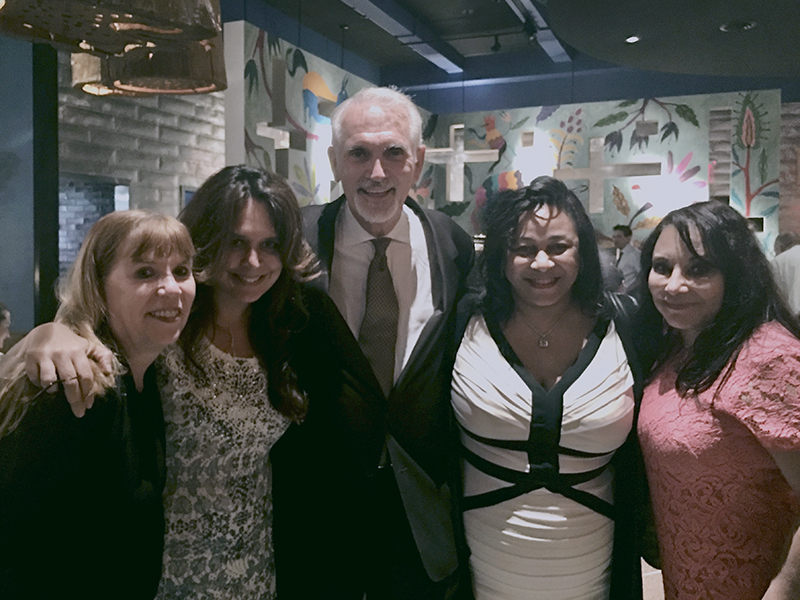
Dr. DeLeo’s philosophy of education “when you teach, you learn,” is rooted in kindness and respect for residents, colleagues, and patients alike.
As he puts it, “when you teach, you learn.” A philosophy of education that is rooted in kindness and respect for residents, colleagues, and patients alike.
“Teaching and learning mean constantly mentoring, said DeLeo. “And that begins by making the other person feel comfortable, identifying what they need, and being genuinely present.
“Sometimes it’s not about asking the right questions, it’s about sensing what will help someone learn.”
Fair treatment
Growing up, DeLeo saw how socio-economic factors affected people’s access to dermatologists and treatments for skin issues. This realization shaped his views and motivated him to “make things better for all patients.” When he was a young doctor at the Ochsner he observed that there were fewer people of color in the clinic’s waiting rooms, mainly because their socio-economic status made it harder for them to get the care they needed.
“For the few patients of color I did see, especially women with acne, I made a point of prescribing cosmetics that would be safe for their skin,” he recalls. “But it quickly became clear there were no tinted products available for people with darker skin tones.”
That realization stayed with him. “The fact that people of color didn’t even have makeup designed for them spoke volumes about the broader inequities in dermatologic care,” he said.
Years later, as Chair of Dermatology at St. Luke’s-Roosevelt Hospital Center on Manhattan’s Upper West Side, DeLeo recognized another gap. “There were no private dermatology practices serving the area. If you lived on the West Side and didn’t come to us at 168th or 114th Street, you had to go all the way to the East Side,” he explains. “That just didn’t make sense.”
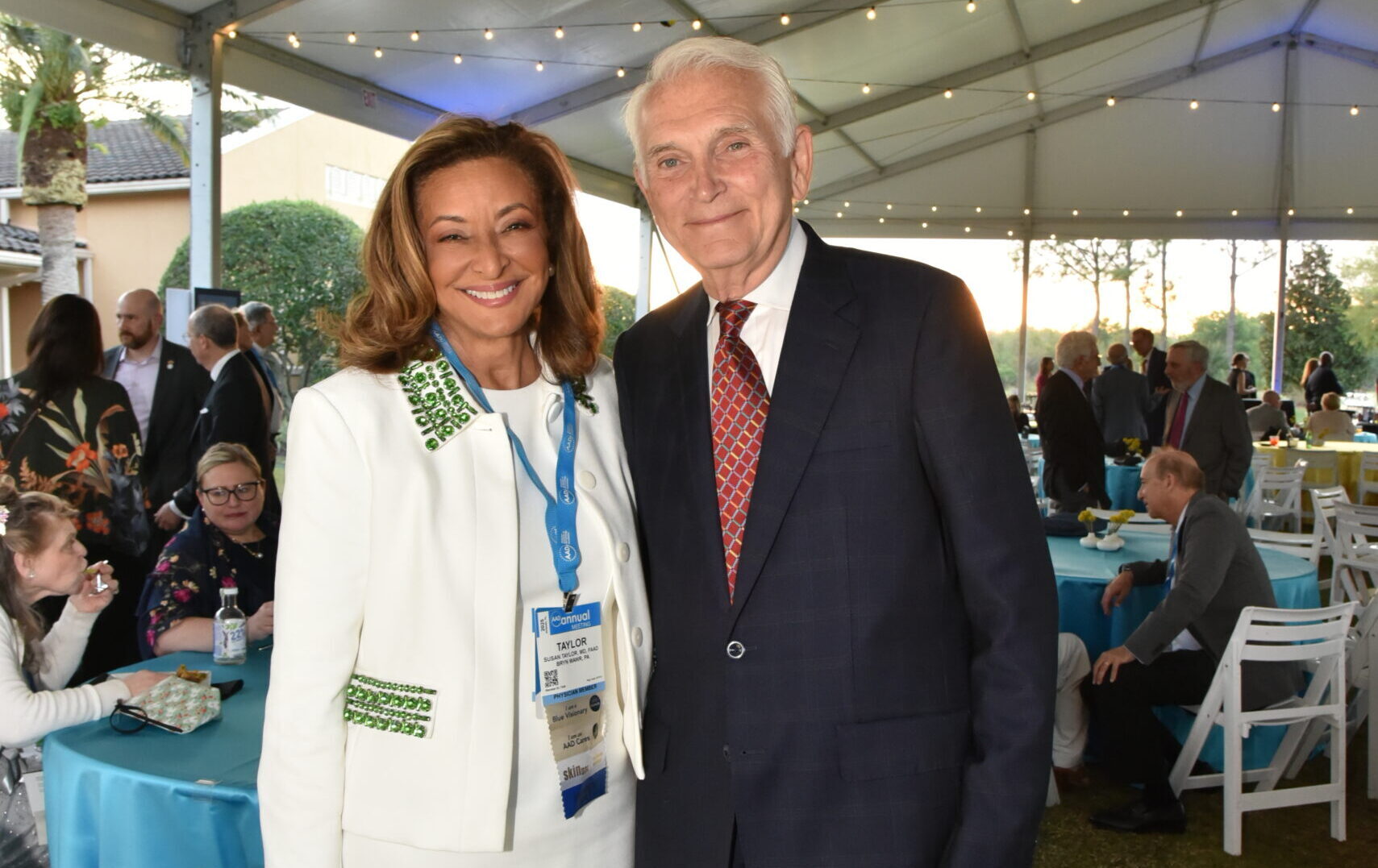
In 1999, Dr. Susan Taylor (left) — then a dermatology resident practicing in Philadelphia — and Dr. Vincent DeLeo (right) co-founded the Skin of Color Clinic. Dr. Taylor, now the Bernett L. Johnson Endowed Professor, Director of the Skin of Color Research Fellowship, and Vice Chair for Diversity, Equity, and Inclusion in the Department of Dermatology at the Perelman School of Medicine at the University of Pennsylvania, went on to establish the Skin of Color Society in 2004.
He quickly established private practices within the hospital system, integrating Medicaid clinics into the broader care model. “We created one level of care,” he noted. “Same staff, same location, same samples. We simply scheduled different patient populations on different days.”
But he didn’t stop there. Aware of the significant Black and Hispanic population in the neighborhood—including many affluent residents—he began thinking about how to expand access further. That led him to collaborate with Dr. Susan Taylor, a former resident then practicing in Philadelphia, to begin addressing these disparities more directly. Together, they co-founded the Skin of Color Clinic at St. Luke’s in 1999. Taylor went on to establish the Skin of Color Society in 2004.
A “senior” moment
Early in his research career, DeLeo received a $15,000 grant from the Dermatology Foundation — a significant sum at the time — for his newly established lab at Columbia.
Because his path had taken a few turns, from OB-GYN to dermatology, then into clinical practice before returning to research, his colleagues jokingly referred to it as the “senior award.”
“Most grant recipients were just a couple of years out of medical school,” he said, “and here I’d been out like 10 years before getting that award.”
Over the years, he has supported the Foundation financially, though he admits he wasn’t always as active as he could have been. Reflecting on that now, he’s quick to acknowledge the vital role the Foundation, its members and supporters play in advancing dermatologic research. “They’re the ones who’ve made it happen,” he said, “just look at what’s changed in the past 20 years.
“That early support helped launch careers and research that eventually attracted major NIH and other funding. The Foundation’s made a real difference.”
The lessons continue
DeLeo continues teaching in the Keck School of Medicine’s Residency Training Program at the University of Southern California, though his career is gradually winding down.
“I do miss the excitement that used to be there,” he said. “Although I still do a bit of mentoring, I actually think I need to get into more of that.”
Music to the ears of medical residents, no doubt.
Learn more about DF Honorary Awards.

